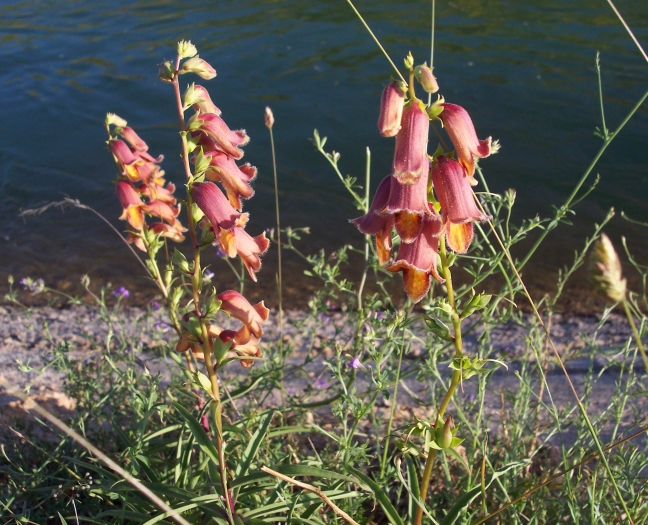Willow-Leaved Foxglove
(Digitalis obscura)
Willow-Leaved Foxglove (Digitalis obscura)
/
/

Cillas
CC BY-SA 4.0
Image By:
Cillas
Recorded By:
Copyright:
CC BY-SA 4.0
Copyright Notice:
Photo by: Cillas | License Type: CC BY-SA 4.0 | License URL: https://creativecommons.org/licenses/by-sa/4.0 | Uploader: Cillas | Publisher: Wikimedia Commons | Title: Digitalis_obscura_1.jpg | Notes: {{Information |Description=柿の実 撮影者:投稿者 撮影日:2004年10月2日 |Source=[[:ja:Image:Kaki.jpg]] |Date=2004-10-02 |Author=[[:ja:User:Sphl|Sphl]] |Permission={{gfdl}} |other_versions= }} [[Category:Unknown_subject]] |
































Estimated Native Range
Summary
Digitalis obscura, commonly known as Willow-Leaved Foxglove, is an evergreen perennial herb native to rocky slopes and shrublands in the mountainous regions of Spain and Morocco. It typically grows to a height of 1-2 feet and a width of 0.8-2 feet. This species is distinguished by its narrow, willow-like leaves and tubular flowers that exhibit a unique blend of brown, yellow, orange, pink, and green hues, blooming profusely in the spring and early summer. The flowers are particularly showy, attracting both visual admiration and pollinators such as hummingbirds.
Willow-Leaved Foxglove is valued for its ornamental flowers and its ability to thrive in dry, Mediterranean-type climates. It is well-suited for rock gardens, borders, and as a specimen plant in non-native regions. Its drought tolerance becomes prominent once the plant is deeply rooted and established, making it a good choice for water-wise gardens. It is winter hardy in USDA zones 4 to 8 and prefers full to partial sun exposure. The ideal soil for D. obscura is average to well-drained with a pH of 5.8–7.2. It is important to avoid waterlogged conditions, especially in winter, to prevent root rot. While it is non-invasive, gardeners should be aware that, like other Digitalis species, it contains cardiac glycosides and is toxic if ingested. It is naturally resistant to deer and rabbits, which adds to its appeal in areas with wildlife pressure.CC BY-SA 4.0
Willow-Leaved Foxglove is valued for its ornamental flowers and its ability to thrive in dry, Mediterranean-type climates. It is well-suited for rock gardens, borders, and as a specimen plant in non-native regions. Its drought tolerance becomes prominent once the plant is deeply rooted and established, making it a good choice for water-wise gardens. It is winter hardy in USDA zones 4 to 8 and prefers full to partial sun exposure. The ideal soil for D. obscura is average to well-drained with a pH of 5.8–7.2. It is important to avoid waterlogged conditions, especially in winter, to prevent root rot. While it is non-invasive, gardeners should be aware that, like other Digitalis species, it contains cardiac glycosides and is toxic if ingested. It is naturally resistant to deer and rabbits, which adds to its appeal in areas with wildlife pressure.CC BY-SA 4.0
Plant Description
- Plant Type: Herb
- Height: 1-2 feet
- Width: 0.8-1.5 feet
- Growth Rate: Moderate
- Flower Color: Orange, Pink
- Flowering Season: Spring, Summer
- Leaf Retention: Evergreen
Growth Requirements
- Sun: Part Shade
- Water: Medium
- Drainage: Medium
Common Uses
Bee Garden, Bird Garden, Border Plant, Butterfly Garden, Deer Resistant, Drought Tolerant, Hummingbird Garden, Rabbit Resistant, Rock Garden, Showy Flowers
Natural Habitat
native to rocky slopes and shrublands in the mountainous regions of Spain and Morocco
Other Names
Common Names: Willow-Leaf Foxglove, Dusty Foxglove, Spanish Rusty Foxglove
Scientific Names: , Digitalis obscura, Digitalis obscura f. integrifolia,
GBIF Accepted Name: Digitalis obscura L.